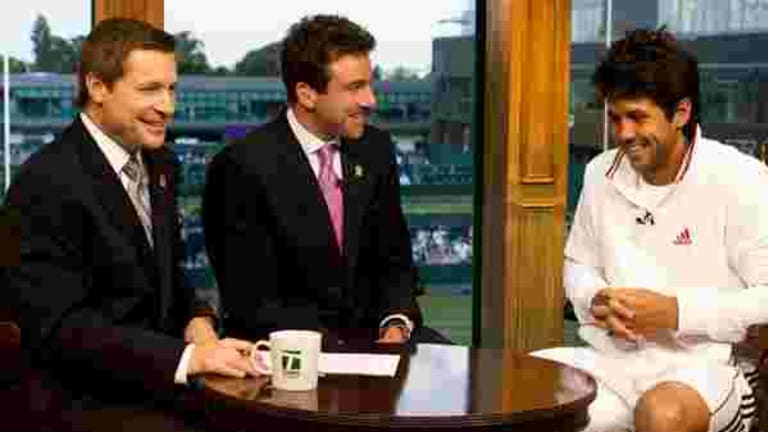On a warm New York evening inside Arthur Ashe Stadium, Justin Gimelstob got his chance.
It was 2007, and the American had just lost an entertaining match to his close friend and rival Andy Roddick. Retirement was imminent. Yes, there would be a few more matches before he officially walked away, but this would be the last on the biggest of stages. His body was breaking down, and Gimelstob had accepted, however reluctantly, that his playing career was coming to an end. This would be the last tennis he played on this revered, electric court.
While the outcome of the match had never really been in doubt (the final score was 7-6 (6), 6-3, 6-3) that didn’t make the final moments any less difficult for the New Jersey native. Or any less emotional. The 30-year-old right-hander decided to take his time exiting the stage and spent a few moments soaking in the atmosphere. He spoke to the New York crowd for the final time as a player. Gimelstob told a couple stories, cracked a few jokes, and then prepared himself for the curtain to come down.
But then a funny thing happened. The boisterous crowd wanted more entertainment. And if they couldn’t get a fourth set of tennis between Justin and Andy, how about some more conversation?
So Gimelstob, still dripping with sweat, took the microphone in his hand and did what he now does so well: He interviewed.
For close to five minutes, he joked, prodded and peppered Roddick with questions before an amused crowd. By the end of the sequence, Gimelstob had convinced America that he was ready to move into broadcasting, and had launched a second career.
“People think it was just a lucky break. Or good timing. And it was, to a certain extent,” Gimelstob said. “That moment was totally unplanned and totally unrehearsed. But people don’t realize how much work I’d put in with the Tennis Channel up to that point. That I had interned with them and studied the business with them…so that when my break did come, I was ready for it.”
That night sparked what is now a raging brush fire of a career. In five years’ time, Gimelstob has parlayed those New York minutes into a thriving livelihood that includes covering the Grand Slams, Davis Cup, and the Olympics for various broadcasting networks; providing commentary and analysis for at least a dozen of the smaller tournaments throughout the year; supplying a consistent flow of interviews and original content for the Tennis Channel through his production company; representing the players on the ATP Board; and promoting a new tennis event that he hopes will find a permanent time slot on the professional tour.
Call it Gimelstob Industries…an ever-expanding empire that shows no signs of slowing down.
Tour veteran Mardy Fish isn’t at all surprised at his good friend’s success. “He’s extremely quick-witted and is passionate about tennis. His knowledge of the sport is unparalleled.”
Veteran tennis reporter Matt Cronin agrees. “Justin was always full of life as a player, so I did expect that he would try his hand as broadcaster, but what I did not anticipate was that he would be so good in between the lines. He not only is a keen strategist who can explain the ebbs and flows of a match, but he also is very good technically when explaining various strokes.”
“To a certain extent it was calculated,” Gimelstob said, reflecting on the direction of his second career. “I always knew my tennis would come to an end, and I didn’t want to be that guy who had nothing to jump to. I’ve always been comfortable around people, comfortable speaking in front of a crowd. Broadcasting seemed like a natural next step for me. I’ve just been lucky that I’ve been given some great opportunities, and I’ve tried to make the most of them.”
